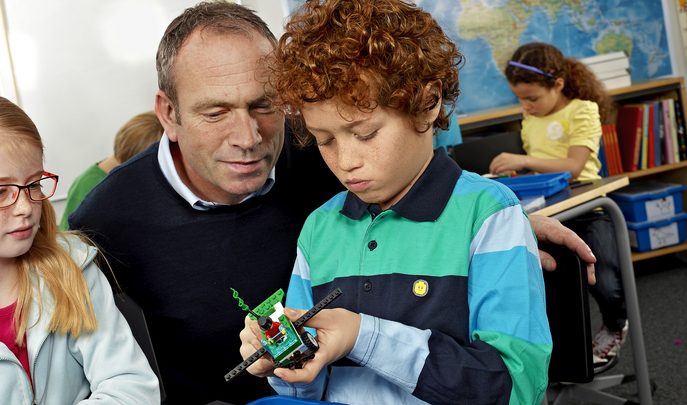Get Children Talking

Jessica Clifton from LEGO Education explains how teachers can encourage pupils to discuss and explore their emotions through fun, hands-on activities – and, in turn, get children talking…

Being able to communicate with other people and feel confident in being able to convey feelings and emotions, is important for adults and children alike. Not just for reasons of wellbeing, but because it’s key to developing positive relationships with others.
Last month, schools around the country marked Anti-Bullying Week 2016, which aims to raise awareness of bullying and highlight different ways of preventing and responding to it. So, how can teachers get children talking about their feelings?
Unfamiliar situations
The classroom is often one of the first places where pupils begin to understand the basics about themselves and those around them. Researchers have found that an individual’s emotional, social and cognitive development is heavily influenced by their perceptions and experiences throughout childhood. For adults, the process of recognising and identifying emotions is an automatic one; for children, it can be a new and sometimes perplexing concept.
In school, children will encounter situations that they may not necessarily be used to, such as:
• Making friends with complete strangers • Falling out with said friends • Sharing items of equipment • Working with different people • Feeling left out things • Experiences of bullying
These are all experiences that will require reactions and responses; they need to understand that feeling sad or angry is perfectly normal. Helping children find ways of identifying different emotions, responding to them appropriately and coping with them is one of the most important learning processes that children will undergo during primary school.
A hands-on appeoach
In common with other forms of childhood learning, hands-on activities and visual resources can often help children to engage with the task or challenge at hand. This approach can also be useful when it comes to discussing emotions and bullying; children may find conversations or talking therapies alone overwhelming and difficult to process, leading to intangible outcomes.
Why not have pupils think about the possible outcomes of a situation, such as name-calling? They can discuss what might happen, how it makes a person feel, and how to respond appropriately if they witness or experience it.
Addressing issues such as leaving others out or name-calling, can deter further bullying in the classroom or playground, since children will be better able to understand their peers’ feelings and personalities and appreciate what constitutes positive and negative behaviour.
Building scenes and role play exercises can teach children how to behave in a particular social situation. Pupils who find it difficult to interact with others could be asked to build what they think a good playtime would look like. Getting them to physically act it out or construct a model of it will enable them to understand the situation from different perspectives and recognise what they’d need to do in that situation, cope with it better and form more positive relationships with others.
A healthy outlook
LEGO Education BuildToExpress is a resource that helps teach language and communication development at Key Stages 1 and 2. Pupils use LEGO elements – carefully selected to provide a broad spectrum of ‘ready-made metaphors’ – and bricks to represent their thoughts and emotions, or portray scenarios they’ve found themselves in, such as feeling upset or happy. These can then be discussed, with the physical representation of how they’re feeling helping them to explain their emotions and thoughts.
By enabling children to build scenarios and develop emotional experiences, and then process these through dialogue and reflection, discussing complex situations and emotions becomes easier. The dialogue will have been opened up and normalised, after which they will begin to understand that it’s okay to talk about their feelings. This will subsequently help them develop their emotional literacy and relationships with peers.
Emotional and mental wellbeing is extremely important during childhood, as it can have a significant impact on self-esteem and perceptions of oneself and the world. Teachers have the important responsibility of nurturing this learning and development in order to build resilience, increase confidence and enable children to understand that feelings and emotions should be discussed, rather than concealed.
By identifying emotions and feelings at an early stage, and discussing appropriate and inappropriate behaviour, children will be able to develop positive relationships and a healthy outlook for the social and emotional chapters in their lives that lie ahead of them.
To find out more about LEGO® Education UK BuildToExpress and its other education resources, visit LEGOeducation.co.uk












